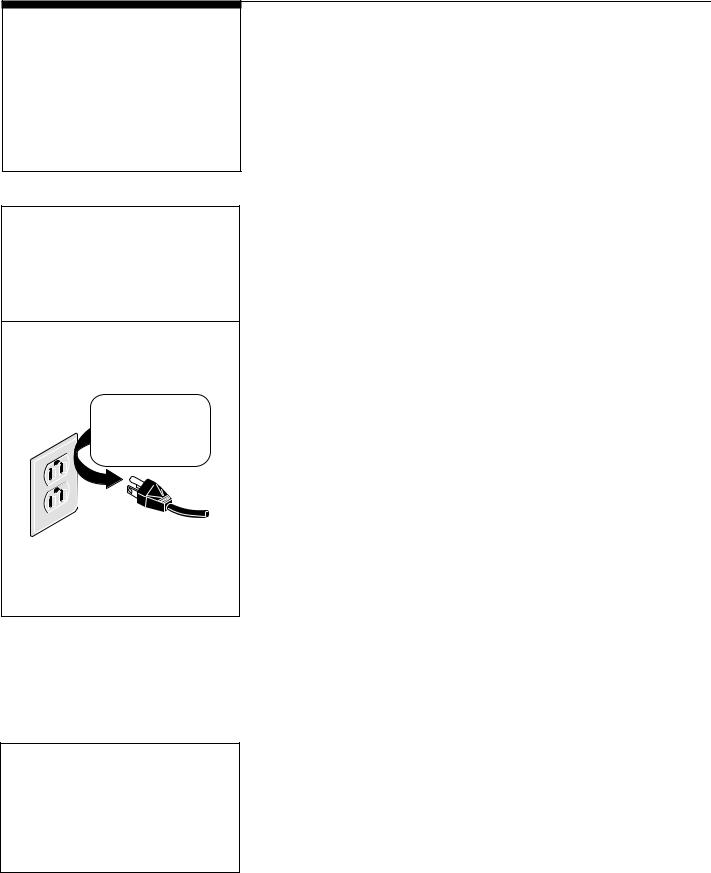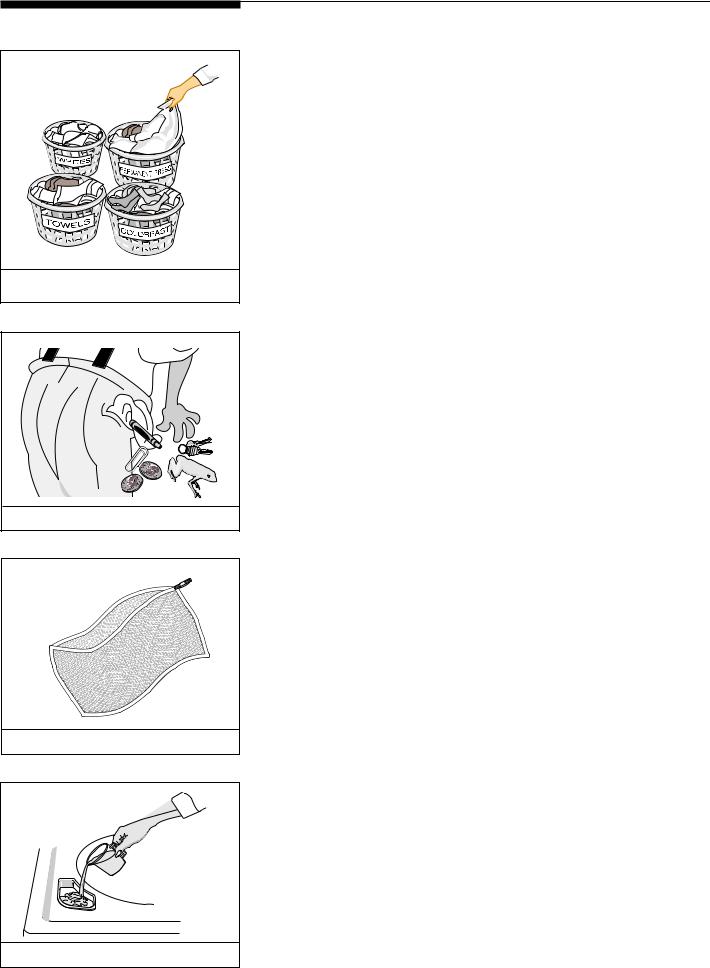AEG GCET1031CS Manual

2





 For your safety, the information in this manual must be followed to minimize the risk of fire or explosion or to prevent property damage, personal injury or loss of life.
For your safety, the information in this manual must be followed to minimize the risk of fire or explosion or to prevent property damage, personal injury or loss of life.
-Do not store or use gasoline or other flammable vapors and liquids in the vicinity of this or any other appliance.
-WHAT TO DO IF YOU SMELL GAS:
Do not try to light any appliance.
Do not touch any electrical switch; do not use any phone in your building. Clear the room, building or area of all occupants.
Immediately call your gas supplier from a neighbor's phone. Follow the gas supplier's instructions.
If you cannot reach your gas supplier, call the fire department.
Installation and service must be performed by a qualified installer, service agency or the gas supplier.
Product Registration
Thank you for choosing this laundry center. This owner's guide will explain
proper operation and care.
Record Your Model and Serial Numbers
Record below the model and serial numbers found on the laundry center serial plate located on the inside of the dryer door. Keep these numbers for future reference.
Model Number __________________
Serial Number ___________________
Date of Purchase ________________
Register Your Product
The self-addressed PRODUCT REGISTRATION CARD should be filled in completely, signed and returned.
Versión en español
Si desea obtener una copia en español de este Manual del Usuario, sírvase escribir aladirecciónqueseincluyeacontinuación. Solicite la P/N 131781800.
Spanish Owner's Guides
Frigidaire Company
P. O. Box 9061
Dublin, Ohio 43017-0961
©1998 White Consolidated Industries, Inc.
All rights reserved.
Important Safety Instructions
Read all instructions before using this laundry center.




 To reduce the risk of fire, electrical shock, or injury to persons when using this laundry center, comply with the basic warnings listed below.
To reduce the risk of fire, electrical shock, or injury to persons when using this laundry center, comply with the basic warnings listed below.
 Failure to comply with these warnings could result in serious personal injuries.
Failure to comply with these warnings could result in serious personal injuries.
Prevent Fire




 Do not wash or dry items that have been previously cleaned in, soaked in, or spotted with gasoline, cleaning solvents, kerosene, cooking oils, waxes, etc. Do not store these items on or near the dryer. These substances give off vapors that could ignite or explode.
Do not wash or dry items that have been previously cleaned in, soaked in, or spotted with gasoline, cleaning solvents, kerosene, cooking oils, waxes, etc. Do not store these items on or near the dryer. These substances give off vapors that could ignite or explode.




 Do not put oily or greasy rags or clothing on top of the laundry center. These substances give off vapors that could ignite the materials.
Do not put oily or greasy rags or clothing on top of the laundry center. These substances give off vapors that could ignite the materials.




 Do not add gasoline, cleaning solvents, or other flammable or explosive substances to the wash water. These substances give off vapors that could ignite or explode.
Do not add gasoline, cleaning solvents, or other flammable or explosive substances to the wash water. These substances give off vapors that could ignite or explode.




 Under certain conditions, hydrogen gas may be produced in a hot water system that has not been used for 2 weeks or more. HYDROGEN GAS IS EXPLOSIVE. If the hot water system has not been used for such a period, before using the washer, turn on all hot water faucets and let the water flow from each for several minutes. This will release any accumulated hydrogen gas. Hydrogen gas is flammable; do not smoke or use an open flame during this time.
Under certain conditions, hydrogen gas may be produced in a hot water system that has not been used for 2 weeks or more. HYDROGEN GAS IS EXPLOSIVE. If the hot water system has not been used for such a period, before using the washer, turn on all hot water faucets and let the water flow from each for several minutes. This will release any accumulated hydrogen gas. Hydrogen gas is flammable; do not smoke or use an open flame during this time.




 To prevent fire, do not use heat to dry items containing plastic, foam rubber or similarly textured rubber-like materials, or items containing feathers or down. Use Air Fluff (No Heat) only.
To prevent fire, do not use heat to dry items containing plastic, foam rubber or similarly textured rubber-like materials, or items containing feathers or down. Use Air Fluff (No Heat) only.




 Clean the dryer lint screen before or after each load. The interior of the dryer, lint screen housing and exhaust duct should be cleaned approximately every 18 months by qualified service personnel. An excessive amount of lint buildup in these areas could result in inefficient drying and possible fire. See Care and Cleaning, pages 12-13.
Clean the dryer lint screen before or after each load. The interior of the dryer, lint screen housing and exhaust duct should be cleaned approximately every 18 months by qualified service personnel. An excessive amount of lint buildup in these areas could result in inefficient drying and possible fire. See Care and Cleaning, pages 12-13.
Printed in U.S.A.
3

This Owner's Guide provides general operating instructions for your laundry center. It also contains information about features for several other models. Your laundry center may not have every feature included.
Use the laundry center only as instructed in this Owner's Guide.




 Avoid fire hazard or electrical shock. Do not use an adaptor plug or extension cord or remove grounding prong from electrical power cord. Failure to follow this warning can cause serious injury, fire or death.
Avoid fire hazard or electrical shock. Do not use an adaptor plug or extension cord or remove grounding prong from electrical power cord. Failure to follow this warning can cause serious injury, fire or death.
GAS LAUNDRY CENTERS:
Grounding type wall receptacle
Do not under
any circumstances cut, remove,
or bypass
the grounding prong from this plug.
Power supply cord with 3-prong grounding plug
CORRECT
Use this way ONLY
Note: The instructions appearing in this Owner's Guide are not meant to cover every possible condition and situation that may occur. Common sense and caution must be practiced when installing, operating and maintaining any appliance.




 Do not operate the dryer if the lint screen is blocked, damaged or missing. Fire hazard, overheating and damage to fabrics can occur. If your dryer has a drying rack, always replace the lint screen when finished using the drying rack.
Do not operate the dryer if the lint screen is blocked, damaged or missing. Fire hazard, overheating and damage to fabrics can occur. If your dryer has a drying rack, always replace the lint screen when finished using the drying rack.




 Keep area around the exhaust opening and surrounding areas free from the accumulation of lint, dust and dirt.
Keep area around the exhaust opening and surrounding areas free from the accumulation of lint, dust and dirt.




 Do not obstruct the flow of ventilating air. Do not stack or place laundry or throw rugs against the front or back of the laundry center.
Do not obstruct the flow of ventilating air. Do not stack or place laundry or throw rugs against the front or back of the laundry center.




 Do not spray any type of aerosol into, on or near laundry center at any time.
Do not spray any type of aerosol into, on or near laundry center at any time.




 Do not use fabric softeners or products to eliminate static unless recommended by the manufacturer of the fabric softener or product.
Do not use fabric softeners or products to eliminate static unless recommended by the manufacturer of the fabric softener or product.
 Failure to comply with these warnings could result in fire, explosion, serious bodily injury and/or damage to the rubber or plastic parts of the laundry center.
Failure to comply with these warnings could result in fire, explosion, serious bodily injury and/or damage to the rubber or plastic parts of the laundry center.
Protect Children




 Do not allow children to play on or in the laundry center. Close supervision of children is necessary when the laundry center is used near children. As children grow, teach them the proper, safe use of all appliances.
Do not allow children to play on or in the laundry center. Close supervision of children is necessary when the laundry center is used near children. As children grow, teach them the proper, safe use of all appliances.




 Destroy the carton, plastic bag and other packing materials after the laundry center is unpacked. Children might use them for play. Cartons covered with rugs, bedspreads or plastic sheets can become airtight chambers.
Destroy the carton, plastic bag and other packing materials after the laundry center is unpacked. Children might use them for play. Cartons covered with rugs, bedspreads or plastic sheets can become airtight chambers.




 Keep laundry products out of children's reach. To prevent personal injury, observe all warnings on product labels.
Keep laundry products out of children's reach. To prevent personal injury, observe all warnings on product labels.




 Before the laundry center is removed from service or discarded, remove the washer lid and dryer door to prevent accidental entrapment.
Before the laundry center is removed from service or discarded, remove the washer lid and dryer door to prevent accidental entrapment.
 Failure to comply with these warnings could result in serious personal injuries.
Failure to comply with these warnings could result in serious personal injuries.
Prevent Injury




 To prevent shock hazard and assure stability during operation, the laundry center must be installed and electrically grounded by a qualified service person in accordance with local codes. Installation instructions are packed in the laundry center for the installer's reference. Refer to INSTALLATION INSTRUCTIONS for detailed grounding procedures. If the laundry center is moved to a new location, have it checked and reinstalled by a qualified service person.
To prevent shock hazard and assure stability during operation, the laundry center must be installed and electrically grounded by a qualified service person in accordance with local codes. Installation instructions are packed in the laundry center for the installer's reference. Refer to INSTALLATION INSTRUCTIONS for detailed grounding procedures. If the laundry center is moved to a new location, have it checked and reinstalled by a qualified service person.




 To prevent personal injury or damage to the laundry center, the electrical power cord of a gas laundry center must be plugged into a properly grounded system. Never ground the laundry center to a gas pipe. Do not use an extension cord or an adaptor plug.
To prevent personal injury or damage to the laundry center, the electrical power cord of a gas laundry center must be plugged into a properly grounded system. Never ground the laundry center to a gas pipe. Do not use an extension cord or an adaptor plug.
4

Important Safety
Instructions (continued)

 Follow package directions when using laundry products. Incorrect usage can produce poisonous gas--resulting in serious injury or death.
Follow package directions when using laundry products. Incorrect usage can produce poisonous gas--resulting in serious injury or death.
Do not combine laundry products for use in 1 load unless specified on the label.
Do not mix chlorine bleach with ammonia or acids such as vinegar.




 Do not use or mix liquid chlorine bleach with other household chemicals such as toilet cleaners, rust removers, acid or products containing ammonia. These mixtures can produce dangerous fumes which can cause serious injury or death.
Do not use or mix liquid chlorine bleach with other household chemicals such as toilet cleaners, rust removers, acid or products containing ammonia. These mixtures can produce dangerous fumes which can cause serious injury or death.




 To prevent serious personal injury and damage to the laundry center:
To prevent serious personal injury and damage to the laundry center:
All repairs and servicing must be performed by an authorized servicer unless specifically recommended in this Owner's Guide. Use only authorized
factory parts.
Do not tamper with controls.
Do not install or store the laundry center where it will be exposed to the weather.




 ALWAYS disconnect the laundry center from the electrical supply before attempting any service or cleaning. Failure to do so can result in electrical shock or injury.
ALWAYS disconnect the laundry center from the electrical supply before attempting any service or cleaning. Failure to do so can result in electrical shock or injury.




 Do not use any type spray cleanser when cleaning dryer interior. Hazardous fumes or electrical shock could occur.
Do not use any type spray cleanser when cleaning dryer interior. Hazardous fumes or electrical shock could occur.




 To prevent injury, do not reach into the washer while parts are moving. Before loading, unloading or adding items, push in the cycle selector knob and allow the tub to coast to a complete stop before reaching inside.
To prevent injury, do not reach into the washer while parts are moving. Before loading, unloading or adding items, push in the cycle selector knob and allow the tub to coast to a complete stop before reaching inside.




 To prevent injury, do not reach into the dryer if the drum is moving. Wait until the dryer has stopped completely before reaching into the drum.
To prevent injury, do not reach into the dryer if the drum is moving. Wait until the dryer has stopped completely before reaching into the drum.
 A thermal limiter switch automatically turns off the dryer motor in the unlikely event of an overheated situation (electric dryers only). A service technician must
A thermal limiter switch automatically turns off the dryer motor in the unlikely event of an overheated situation (electric dryers only). A service technician must
replace the thermal limiter switch after correcting the fault.
 The washer is equipped with an electrical overload protector. The motor will stop if it becomes overheated. The washer will automatically restart after a cool
The washer is equipped with an electrical overload protector. The motor will stop if it becomes overheated. The washer will automatically restart after a cool
down period of up to 30 minutes, if the washer has not been manually turned off during this time.
 Failure to comply with these warnings could result in serious personal injuries.
Failure to comply with these warnings could result in serious personal injuries.
SAVE THESE INSTRUCTIONS
5

Washing Procedures
Sort laundry into loads that can be washed together.
•Follow the guidelines below for preparing the wash load.
•Read the Washer Operating Instructions, pages 17-18, for operating your specific model.
•Always read and follow fabric care and laundry product labels.

 To reduce the risk of fire, electrical shock, or injury to persons, read Important Safety Instructions, pages 2-4, before operating this washer.
To reduce the risk of fire, electrical shock, or injury to persons, read Important Safety Instructions, pages 2-4, before operating this washer.
1. Sort laundry into loads that can be washed together.
Sort items by recommended water temperatures, wash time, and agitate/spin speeds.
•Separate white, light, and colorfast items from dark and noncolorfast items.
•Separate items which shed lint from items which attract lint. Permanent press, synthetic, knit and corduroy items will pick up lint from towels, rugs and chenille bedspreads.
•Separate heavily soiled items from lightly soiled items.
•Separate lacy, sheer and loosely knit items from sturdy items.
2. Prepare items for washing.
•Empty pockets.
•Brush off lint and dirt. Shake out rugs and beach towels.
•Close zippers, fasten hooks, tie strings and sashes, and remove nonwashable trims and ornaments.
|
• Remove pins, decorative buttons, belt buckles, and other objects which |
|
could be damaged. This also helps protect other items in the wash load. |
|
• Mend rips and tears to prevent further damage during washing. |
|
• Place delicate items such as bras, shoulder pads, hosiery, and belts in a mesh |
|
bag to prevent tangling during the wash cycle. |
Empty pockets. |
• Turn knit items inside out to prevent pilling. |
Place delicate items in a mesh bag.
Bleach Dispenser (some models) |
3. Pretreat stains and heavy soil.
See Stain Removal, pages 7-8, for details.
4. Add a measured amount of detergent to the wash tub before adding the laundry load.
Follow detergent manufacturer's directions. The amount required depends on type of detergent, load size and soil level, and water hardness.
5.If desired, add liquid bleach to Bleach Dispenser (some models).
•Before adding the wash load, add liquid bleach to bleach dispenser located
in left front corner under the lid:
•3/4 cup (180 ml) for small loads
•1 cup (240 ml) for large loads
•1-1/4 cups (300 ml) for extra-large loads.
•Then add 1 cup (240 ml) water to flush the dispenser.
•Do not use powdered bleach in the bleach dispenser.
For models without a bleach dispenser, dilute the recommended amount of liquid chlorine bleach in 1 quart (.95 L) water. Add it to wash water after
a few minutes of agitation. Do not pour bleach directly on wash load.
6
